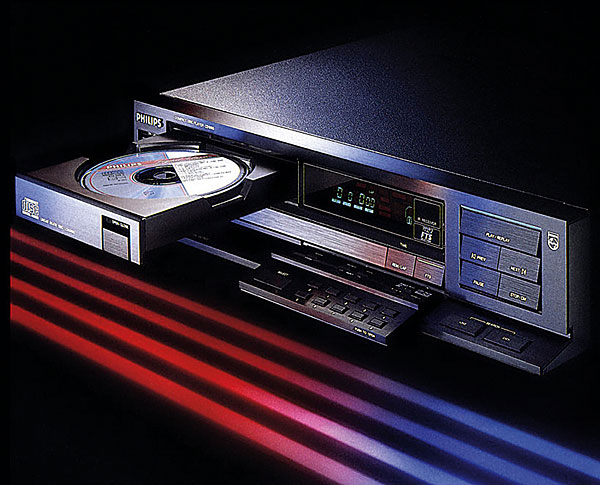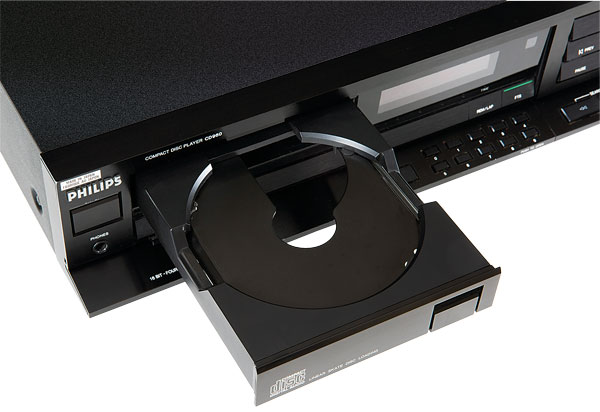Philips CD960 CD player

 While its looks belie its flagship status, this '80s CD player was designed with just one aim in mind: bring credibility to Philips' cutting-edge tech. How does it sound today?
While its looks belie its flagship status, this '80s CD player was designed with just one aim in mind: bring credibility to Philips' cutting-edge tech. How does it sound today?
The Philips CD960 of 1987 was part of a range that included the FA860 amplifier [HFN Feb '20]. As one of the company's occasional flirtations with the top end of hi-fi, this series was intended to demonstrate that the Dutch brand could offer components capable of state-of-the-art performance, as well as provide a boost in status to the more affordable models in the range.
With CD having by then become a highly competitive marketplace, Philips had been compelled to innovate to maintain the leadership its players had enjoyed during the first few years of the format. Back then, most Japanese equipment offered just a single DAC, time-shared between the two stereo channels, allied to an analogue filter. By contrast, Philips fitted separate left and right DACs and a fourfold oversampling digital filter to all its models.

Sweet Sixteen
There was a catch though, for the Philips DACs had a basic resolution of 14-bits, when all the Japanese players offered the full 16. It could be demonstrated that the oversampling system effectively recovered the lost detail, but in marketing terms, such intricacy was difficult to communicate effectively to the buying public.
The solution was to design a 16-bit DAC to work with the fourfold oversampling digital filter. This was by no means a simple task, but once completed the new '16x4' package put Philips at the forefront of CD player design once more, confounding the Japanese who by this stage were just coming up with 2x oversampling 16-bit machines.
Sadly though, as the electronics inside the new Philips players improved, the quality of the cabinets and mechanical parts used failed to keep up. Older models, such as the CD104 [HFN Apr '14] from 1984, were built on a sturdy die-cast alloy chassis, but this had now been replaced with lightweight plastic mouldings as part of the CD/CD (Compact Disc/Cost Down) project.

To compound the problem, the top-of-the-range CD650 shared so many common parts with lesser models, such as the entry level CD160, that it was obvious that the two were simply variations on a theme. The result was that is was difficult to justify charging a premium for the pricier model when it didn't offer much that was greatly different. A more credible flagship was needed, which was the role of the CD960.
As with the FA860 amplifier, the design and assembly of the CD960 was done in Japan by MJI (Marantz Japan Incorporated) which at that time was a Philips subsidiary. However, unlike the FA860 amp, extensive use was made of Philips components and technology, including the complete 16x4 chipset and TDA1541A dual 16-bit DAC.
Exotic Parts
When it came to the transport, Marantz decided not to opt for the latest Philips CDM4 deck, with its resin chassis and integrated servo electronics, and instead took a step back, selecting the CDM1 optical unit, as was used in some of the company's 14-bit models.
Since the tray mechanism of the Philips players of the day had attracted particular criticism (it was variously described as being flimsy, slow and noisy), the CD960's CDM1 deck was fitted to a Marantz-designed loader, which operated quickly and smoothly.

The open-and-close key was located on the door of the tray, exactly as it was on the Sony CDP-101 [HFN Jan '12]. This in turn was mounted in a cast alloy chassis, like that found in the CD104 but bigger. The rest of the build followed accepted Japanese high-end practice, using many locally sourced components. This included a generous power supply system with separate sections for the analogue, digital and mechanical parts of the machine.
Meanwhile, the DAC and analogue sections received a large dose of exotic Japanese parts, though it's worth noting that the critical components which defined the working points of the filters were left unchanged from the basic Philips specification. Rather, sensible improvements were made, such as the use of separate op-amp chips instead of combined ones, to reduce crosstalk, and the selecting of film capacitors instead of ceramics for use around the DAC to eliminate microphony – something that would become a standard tweak for anyone designing a high quality player around the TDA1541A DAC.
One small break from the Philips pattern could be found in the servo section, where instead of the standard ICs a custom circuit was built onto a small extra PCB using miniature surface-mounted components.
Outwardly, the CD960 retained the European look but the silky black alloy front panel and carefully weighted controls were way ahead of those of the creaky, clumsy CD650. A ledge at the bottom of the fascia housed some of the control keys, as did a hidden drawer, which concealed the less frequently used functions. Enhancements included full infrared remote control; Favourite Track Selection (FTS), which could be programmed to remember the owner's favourite songs on up to 227 different discs; and what was claimed to be a hi-fi headphone amplifier, which boasted its own slider volume control.
None of this came cheap: the CD960 cost £699 at launch – a whopping £300 more than the CD650. Yet it sold well, if the numbers that remain in circulation today are anything to go by. At the same time, Marantz released its own version, the CD-94. Although outwardly quite different, the two models were identical inside.


















































